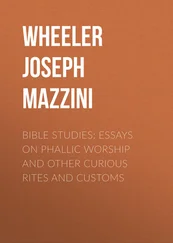‘I won’t let go of you, Agnes. I’m right here.’
Clenching his teeth, he hauled her out of the snow, wrapping her arm about his neck to lift her higher. ‘There you go,’ he said gently, holding her fast about the waist. He ignored the smell of shit. ‘I’ve got you.’
Around them the farmers of the District started walking towards the three hills that stood together in a clump. Already over forty men stood around the middle hill, all dressed in black. They look like birds of prey surrounding their kill, Tóti thought.
‘Do we have to go with them?’ Agnes asked, her voice cracking.
‘No, Agnes.’ Tóti reached over and brushed her hair out of her eyes with his free hand. ‘No, we have to walk just a little way, and then wait. Fridrik is walking out first.’
Agnes nodded, and clung to Tóti as he slowly stumbled through the drifts to a tussock, lifting her as best as he could. Breathing heavily, he gently lowered her onto the snowy ground and sank down next to her. Jón squatted beside them and picked up the flask that had slipped from his gloved hand. Tóti watched as the older man took a quick sip and winced.
The minutes staggered past. Tóti tried to ignore the deadening needles of cold that wormed into his bones. He held Agnes’s hands in his own, her head was on his shoulder.
‘Why don’t we pray, Agnes?’
The woman opened her eyes and stared into the distance. ‘I can hear singing.’
Tóti turned his face to where the sound was coming from. He recognised the burial hymn, ‘Just like the flower’. Agnes was listening intently, shivering on the ground.
‘Let’s listen together then,’ he whispered. He put his arm about her as the verses lifted over the snowy field and fell about them like a mist.
On Tóti’s left, Jón was bent on his knees, his hands clasped before him, his lips muttering the Lord’s Prayer. ‘Dear Lord, forgive us all our trespasses.’ Tóti gripped Agnes’s hand more tightly, and she gave a small gasp.
‘Tóti,’ she said in a panicked voice. ‘Tóti, I don’t think I’m ready. I don’t think they can do it. Can you make them wait? They have to wait.’
Tóti pulled Agnes closer to him and squeezed her hand.
‘I won’t let go of you. God is all around us, Agnes. I won’t ever let go.’
The woman looked up into the blank sky. The sudden sound of the first axe fall echoed throughout the valley.
The criminals Fridrik Sigurdsson and Agnes Magnúsdóttir were today moved out of custody to the place of execution, and following them to the execution site were the priests Reverend Magnús Árnason, Reverend Gísli Gíslason, Reverend Jóhann Tómasson and Reverend Thorvardur Jónsson, an assistant priest. The criminals had wished that the latter two help them prepare for their deaths. After the priest Jóhann Tómasson completed a speech of admonition to the convict Fridrik Sigurdsson, Fridrik’s head was taken off with one blow of the axe. The farmer Gudmundur Ketilsson, who had been ordered to be executioner, committed the work that he had been asked to do with dexterity and fearlessness. The criminal Agnes Magnúsdóttir, who, while this was taking place, had been kept at a remote station where she could not see the site of execution, was then fetched. After the Assistant Reverend Thorvardur Jónsson had appropriately prepared her for death, the same executioner cut off her head, and with the same craftsmanship as before. The lifeless heads were then set upon two stakes at the site of execution, and their bodies put in two coffins of untreated boards, and buried before the men were dismissed. While the deed took place, and there until it was finished, everything was appropriately quiet and well-ordered, and it was concluded by a short address by Reverend Magnús Árnason to those that were there.
Actum ut supra.
B. Blöndal, R. Olsen, A. Árnason
From the Magistrate’s Book of Húnavatn District, 1830
WHILE THIS NOVEL IS A work of fiction, it is based on real events. Agnes Magnúsdóttir was the last person to be executed in Iceland, convicted for her role in the murders of Natan Ketilsson and Pétur Jónsson on the night between the 13th and 14th of March 1828, at Illugastadir (Illugastaðir), on the Vatnsnes Peninsula, North Iceland. In 1934, Agnes and Fridrik Sigurdsson’s (Friðrik Sigurðsson’s) remains were removed from Thrístapar (Þrístapar) to the churchyard at Tjörn, where they share a grave. Natan Ketilsson’s grave in the same churchyard is no longer marked. Sigrídur Gudmundsdóttir (Sigríður Guðmundsdóttir) was sent to a Copenhagen textile prison, where she is believed to have died after a few years. There was, for some time, a popular local myth that claimed she was rescued from the prison by a wealthy man and went on to live a long life. While this is untrue, it is indicative of public sympathy towards her in the years after these events.
My interpretation of the Illugastaðir murders and executions is informed by many years of research, during which I have accessed ministerial records, parish archives, censuses, local histories and publications, and have spoken with many Icelanders. While some historical characters have been invented, omitted, or had their names altered out of necessity, most, including Björn Blöndal, Assistant Reverend Thorvardur (Þorvarður) Jónsson, most members of the family at Kornsá, and Agnes’s parents and siblings, are taken from historical records.
No offence is intended towards living relatives of any character whose name I have borrowed in the service of telling Agnes’s story.
Many of the letters, documents and extracts presented at the beginning of each chapter have been translated and adapted from original sources. The ruins of Natan’s workshop still stand at Illugastaðir today, and a stone plaque marks the site of execution at Þrístapar. All place names used in this novel are true to life, and many of the farms referenced by Agnes and other characters remain working farms to this day.
Many known and established facts about Agnes’s life and the murders have been reproduced in this novel, and events have either been drawn directly from the record, or are the result of speculation; they are fictional likelihoods. The family at the farm of Kornsá did hold Agnes in custody after she was held at Stóra-Borg, and Agnes chose Assistant Reverend Þórvarður Jónsson to act as her priest in her last days. The nature of their relationship, including their first mysterious meeting and Agnes’s dream, is drawn from local accounts and histories of the area. The high level of literacy shown by the characters is historically accurate. Icelanders have had almost universal literacy rates since the end of the eighteenth century.
I am indebted to the research of scholars such as Gísli Águst Gunnlaugsson, Ólöf Garðarsdóttir, Loftur Guttormson, Gunnar Thorvaldsen, Sören Edvinsson, Richard Tomasson, and Sigurður Magnússon, who have published extensively on subjects such as foster children and paupers, infant mortality, illegitimacy and kinship networks in nineteenth-century Iceland. I have also drawn on many nineteenth-century journals by foreign travellers to Iceland, including those of Ebenezer Henderson, John Barrow, Alexander Bryson, Arthur Dillon, William Hooker, Niels Horrebow, Sir George Mackenzie and Uno Von Troil. Húnavetningur, Sagnaþættir úr Húnaþing , and Hunavatnsþing Brandsstaðaannáll also proved to be invaluable publications.
Several noteworthy books and articles have been written about the Illugastaðir murders, and the life (and death) of Natan Ketilsson, including Enginn Má Undan Líta by Guðlaugur Guðmundsson, Yfirvaldið by Þorgeir Þorgeirsson, Dauði Natans Ketilssonar by Gunnar S. Þorleifsson, Dauði Natans Ketilssonar by Guðbrandur Jónsson, Dauði Natans Ketilssonar by Eline Hoffman (translated into Icelandic by Halldór Friðjónsson), Friðþæging by Tómas Guðmundsson and Agnes of Friðrik fyrir og eftir dauðann by Sigrún Huld Þorgrímsdóttir. While wonderfully useful, some of these publications contradict one another, and some hold a common view of Agnes as ‘an inhumane witch, stirring up murder’. This novel has been written to supply a more ambiguous portrayal of this woman.
Читать дальше










